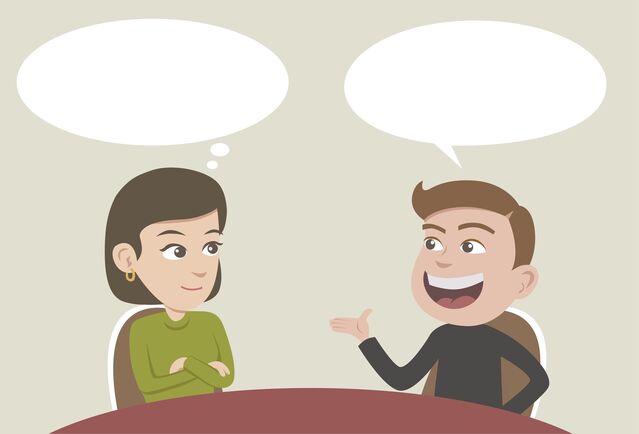Relationships
What Sport Does Collaborative Dialogue Mimic?
Awareness of the necessary skills can keep relationships safe and satisfying.
Posted June 27, 2022 Reviewed by Jessica Schrader
Key points
- Being good at a sport generally requires awareness of the necessary skills plus much practice for consistency in using them.
- When people are unaware of the core collaborative dialogue skills, cooperative relationships can become difficult to impossible to sustain.
- Collaborative dialogue via friendly tossing and catching of information can help sustain positive relationships.

When friends, work colleagues at work, family members, and lovers say “we have a great relationship”—or say “our relationship is not so good”—often what they are referring to is the quality of their dialogue. Is it friendly or fighting?
Friendly dialogue is like a game of catch. A fun game of catch depends on skills of tossing and catching. In collaborative dialogue, information similarly flows back and forth. That's because the participants pass and receive information to and from each other in a friendly manner.
With collaborative dialogue, participants pass information to each other in a safe way and receive information skillfully. By contrast, talking together, and therefore the relationship, feels oppositional instead of smooth-flowing when information-sharing feels like throwing balls at rather than to or with each other.
Braid Your Dialogue
A second metaphor also can be helpful for understanding what enables talking and listening to result in a satisfying collaborative dialogue: the metaphor of intertwining two strands of hair into one braid. In the most satisfying conversations, participants feel that they are co-creating understandings.
Co-creation of new understandings occurs when one person speaks (tosses a ball of information), and the catcher not only receives this information but keeps and genuinely thinks about it. The receiver incorporates the new information into his or her own prior information set, and only then sends forth additional information to the other person.
New ideas then emerge from the blending of the two perspectives. I refer to this additive co-creation process as braided dialogue,
Nancy: I’d really like to take a walk in the park this afternoon.
Norman: I love the idea of walking to the park so we can exercise together, and outside as well. At the same time, I need to make sure to stop at the hardware store.
Nancy: Oh yes, I had forgotten that you wanted to pick up supplies to put up those new shelves. Actually, there’s a park that we don’t often go to near the hardware store. Maybe we could go together to the store, and then walk in that park.
Braided dialogue creates the smooth interweaving of two people’s perspectives that makes communicating a pleasure.
Oppositional Dialogue
Conversations that feel as if the participants are talking against rather than with each other create negative feelings. Adversarial/oppositional dialogue occurs when participants feel like they are on opposing teams. They are playing dodgeball instead of catch. They listen in order to reject or correct what they hear rather than to understand and accept the information sent their way.
Rocky: I’d like to go for a walk in the park this afternoon.
Racine: We can’t do that; I have to go to the hardware store.
Rocky: You’re too worried about getting those shelves up. So what if we wait another week!
Irritated voice tones
Oppositional listening and the frustrating dialogue it creates invite irritation. This tone then has an additional major impact. An irritated tone of voice is likely to create further defensive listening. No one wants to feel criticized or blamed, which is what even the smallest tidbits of impatience, frustration, and especially outright anger convey.
When both participants listen for what's wrong in what they are hearing instead of listening for understanding, this listening error plus a harsh tone can quickly turn a conversation into an argument.
The tone may then become increasingly hostile as both sides aim for domination. When a friendly conversation becomes an argumentative dialogue, the goal switches from increasing mutual understanding to winning. Fighters aim to prove who is right and who is wrong, to establish who is on top and who must submit, and to get their way.
In sum, poor cooperative talking and listening skills create an adversarial tone. An adversarial tone in turn invites increasingly poor talking and listening skills. The two combined create the vicious circle of interactions we refer to as fighting.
The Good News
Collaborative dialogue via friendly tossing and catching of information—these skills sustain positive relationships. For additional coaching in these essential skills, see my Power of Two book and workbook.
When two people both have these skills, cooperation, friendship, and love can flourish.




